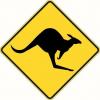Hi all,
I am building q fireplace mantle using poplar. The wall has a slight curve to it. I want to run some kerf cut through the poplar so I can bend it. From what I saw on YouTube, it looked like the cut ended about one quarter inch before going all the way through when people were trying to do this.
I guess my question is, is that a good depth. Will the poplar bend without splitting (most of the videos I saw used plywood). Do I just continue making cuts until I get the bend I want?
Thanks in advance





 Reply With Quote
Reply With Quote







